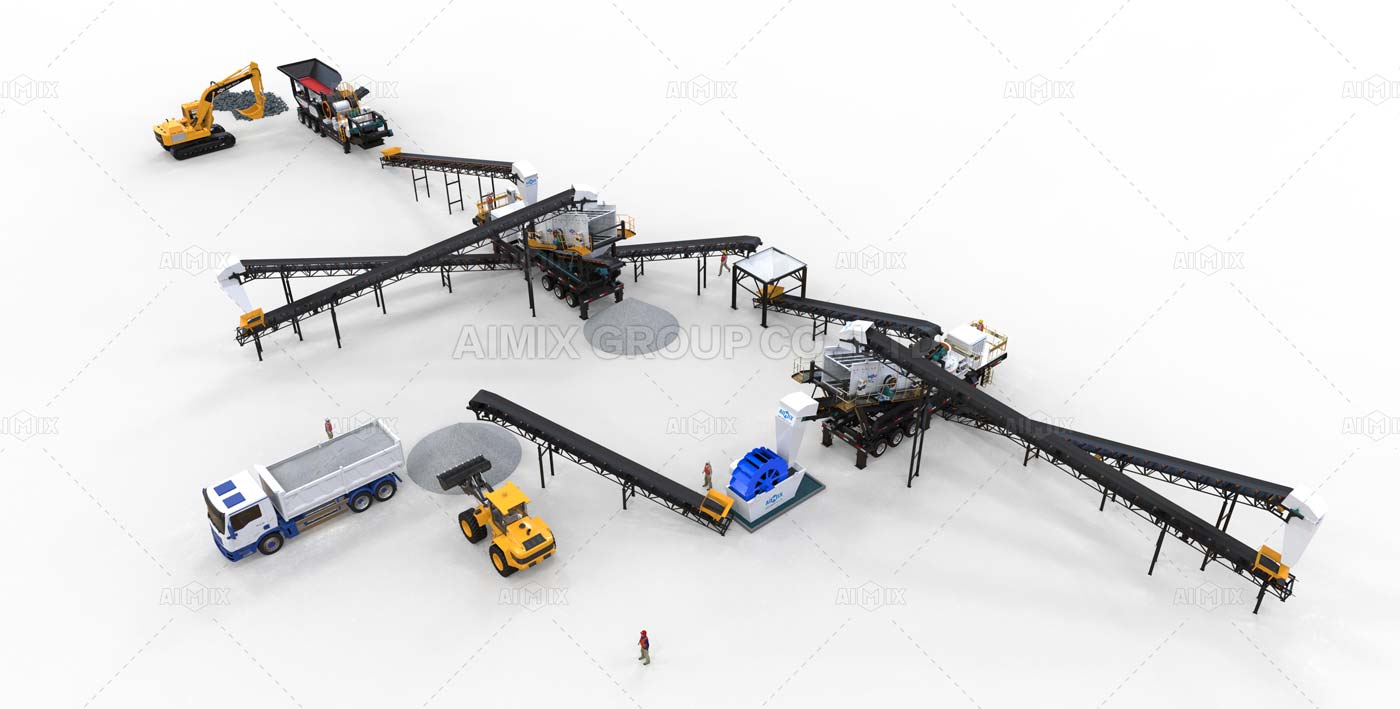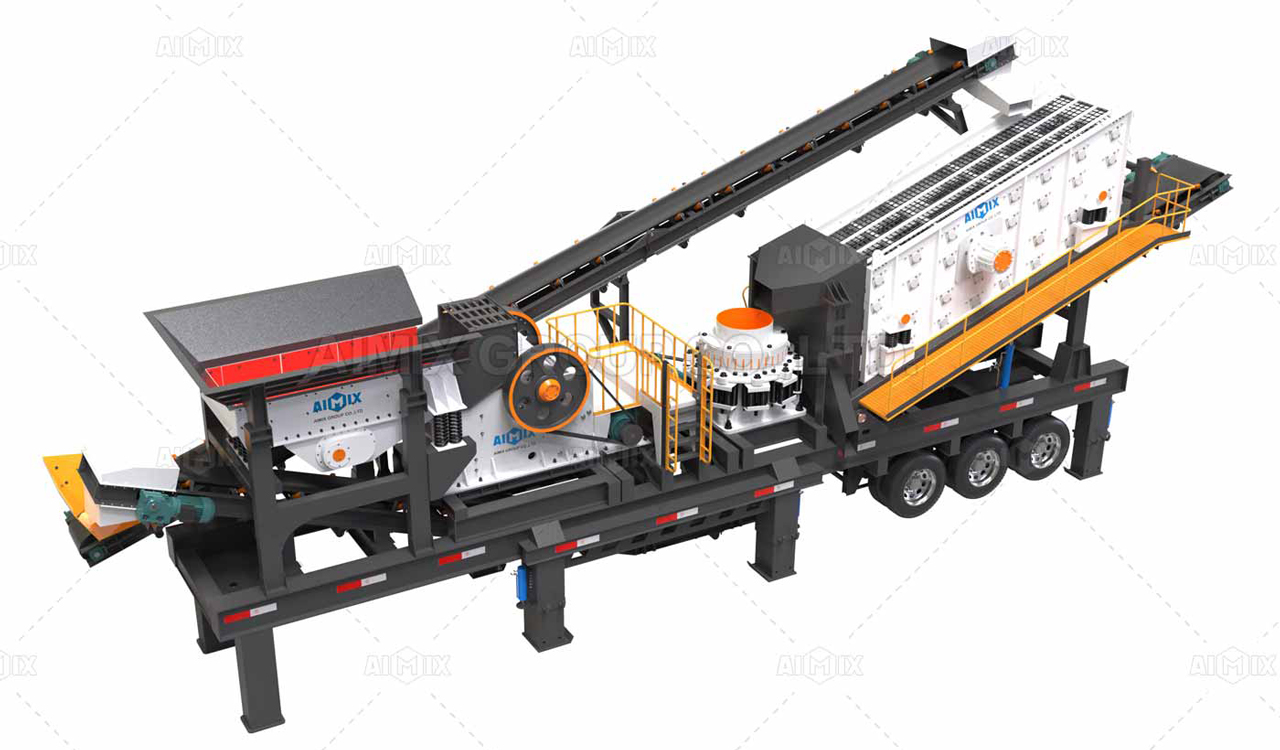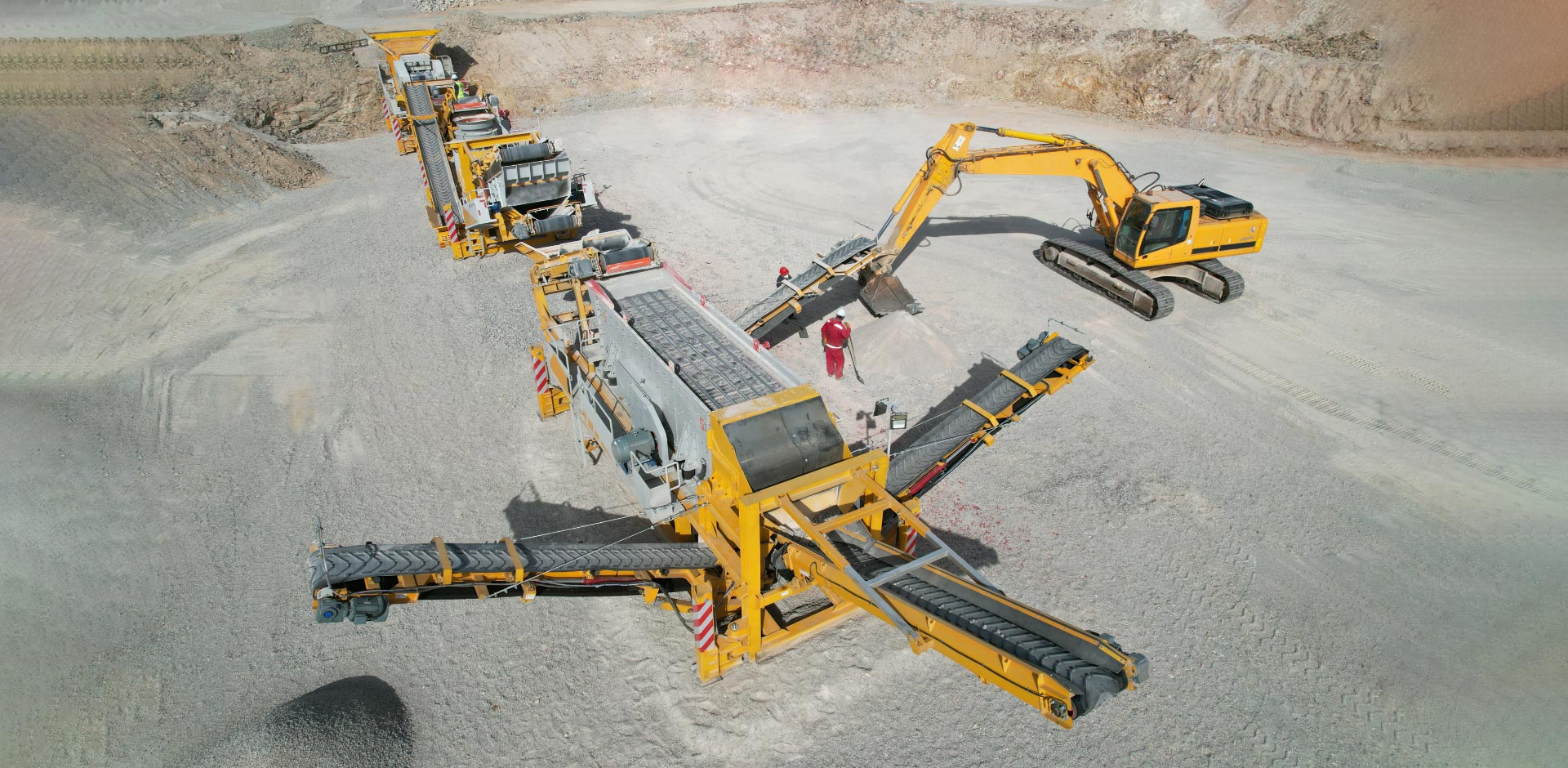A mobile crushing plant is an industrial machine that combines various heavy-duty equipment to crush, sort, and move rock and other materials. It is commonly used in mining, quarrying, recycling, and construction sites for turning large rocks into smaller pieces or even dust.

Here’s a simplified overview of how a mobile crushing plant works:
1. Material Feeding
The first step involves feeding the raw material (rock, stone, concrete, etc.) into the mobile crushing plant. This can be done through a vibrating feeder, an excavator or a loader, depending on the design of the plant and the type of material being processed.

2. Crushing
Once the material is fed into the machine, it is typically conveyed to a crusher. There are different types of crushers available, each suited for specific types of materials and sizes. For example:
- Jaw Crushers: Ideal for hard rocks and large sizes, they work by compressing the material between two jaw plates, one stationary and one movable.
- Cone Crushers: Suited for secondary or tertiary crushing, they crush materials between a rotating cone and a fixed outer shell.
- Impact Crushers: These are used for softer materials and recycling purposes. They operate by throwing the material against hard surfaces to break it apart.
The choice of crusher depends on the material’s hardness, size, and the desired final product.

3. Screening
After crushing, the material often passes through screens integrated within the plant. This process classifies and separates the crushed material into various sizes. Screens can be vibrating or stationary, and their selection depends on the application and the desired end-product. Oversized materials can either be recirculated back into the crusher for further reduction or removed as waste.
4. Conveyors
Conveyors play a vital role in moving material through the different stages within the mobile crushing plant, from feeding to discharging the final product. They also adjust the placement of material for optimal crushing and screening efficiency.
5. Control System
Modern mobile crushing plants are operated using a central control system that monitors the operation, adjusts settings, and provides safety features to prevent mechanical overloads and accidents. This system can be manual or fully automated, incorporating sensors and software to optimize the workflow.
6. Mobility Feature
The defining feature of a mobile crushing plant is its ability to move easily from one location to another. This mobility comes from mounted wheels or tracks, allowing it to be transported over highways or rugged terrain with minimal effort. This enables the plant to be positioned close to the material source, reducing transportation costs and improving efficiency.
Mobile crushing plants vary significantly in size, capabilities, and configurations depending on their intended use, from small, portable units designed for limited space and smaller jobs to large, heavy-duty plants capable of processing thousands of tons per hour. Their modular design often allows the integration of additional components like washing systems, magnetic separators, and custom conveyors to tailor the output to specific needs.


